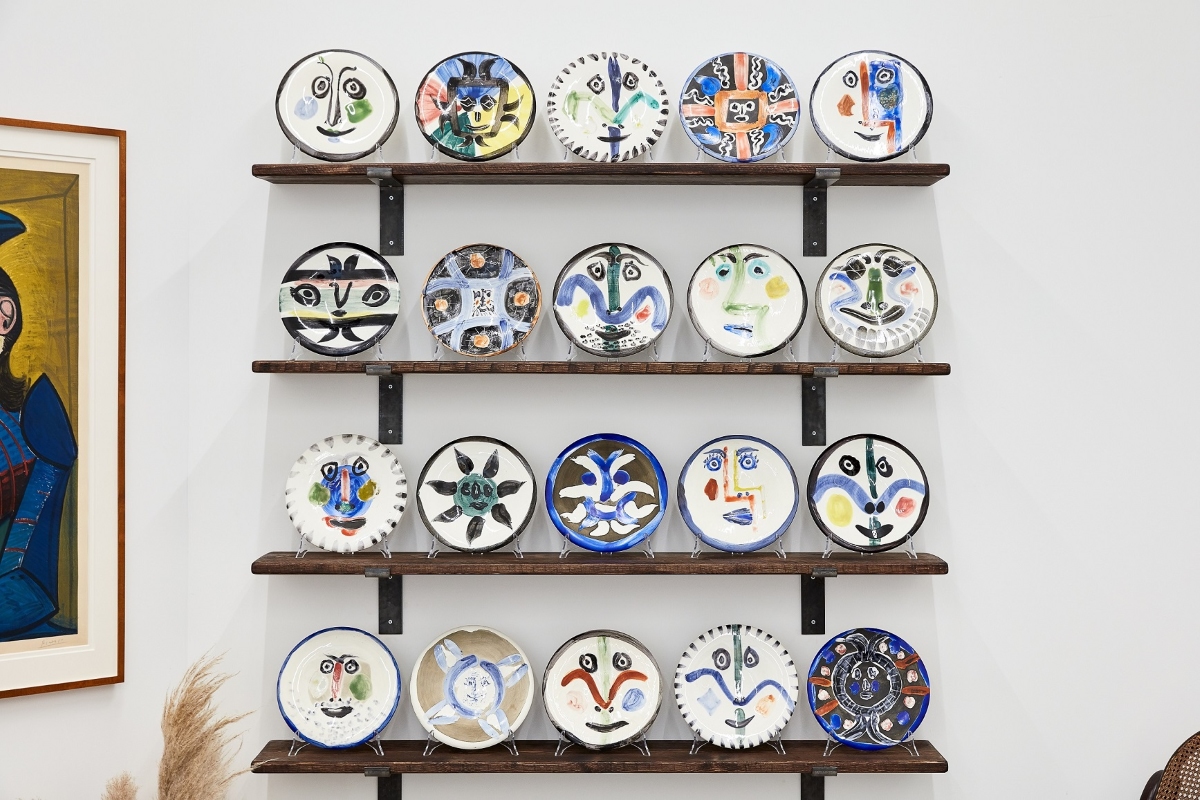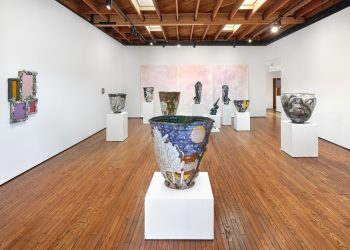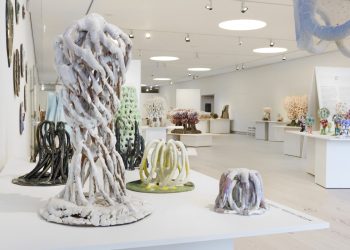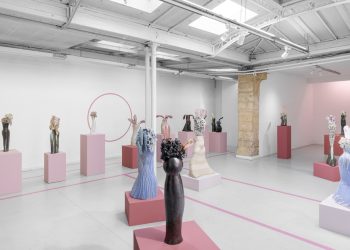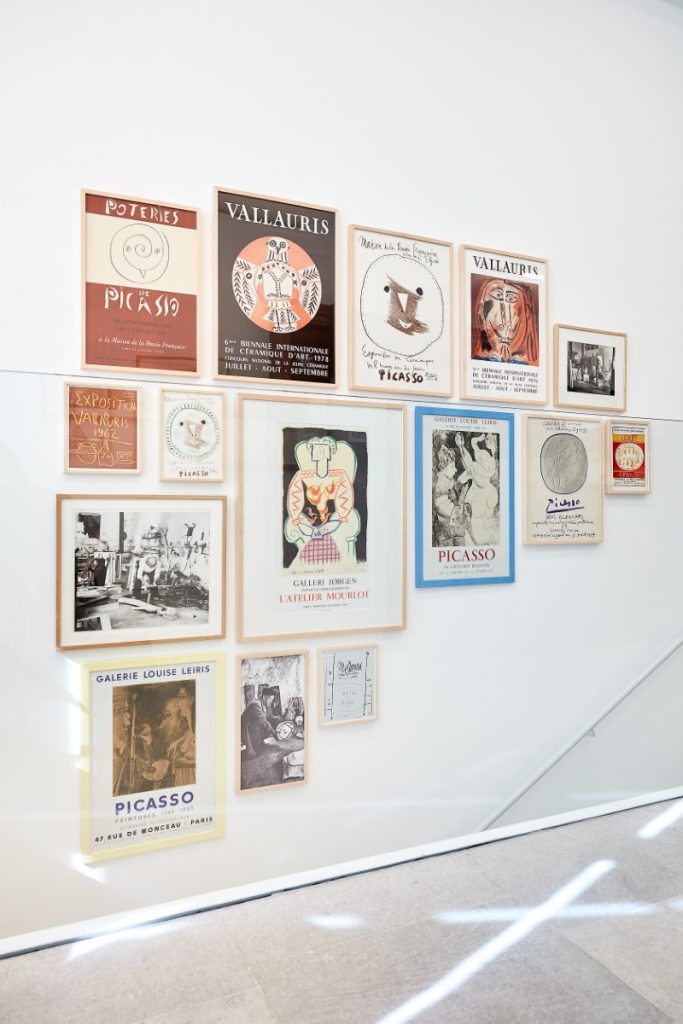
Installation view of Atelier Picasso 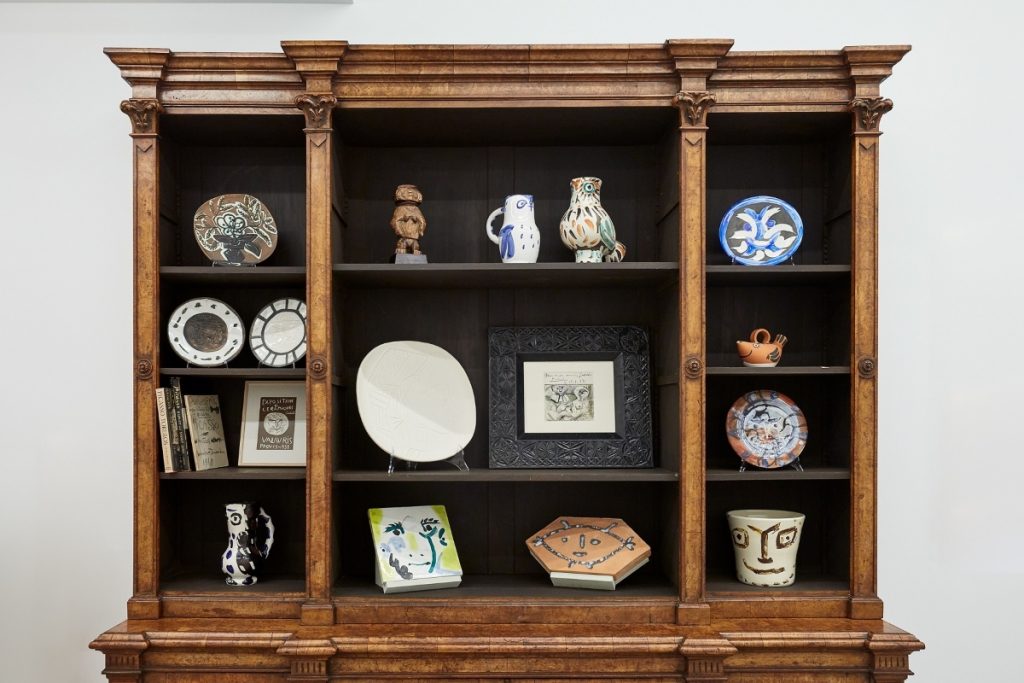
Installation view of Atelier Picasso 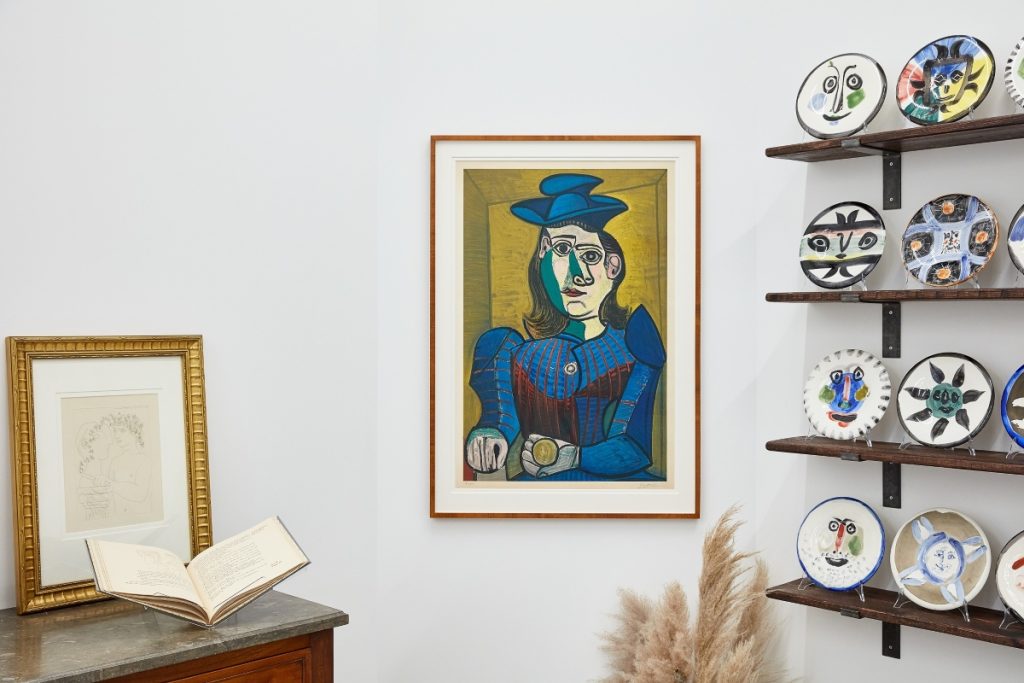
Installation view of Atelier Picasso 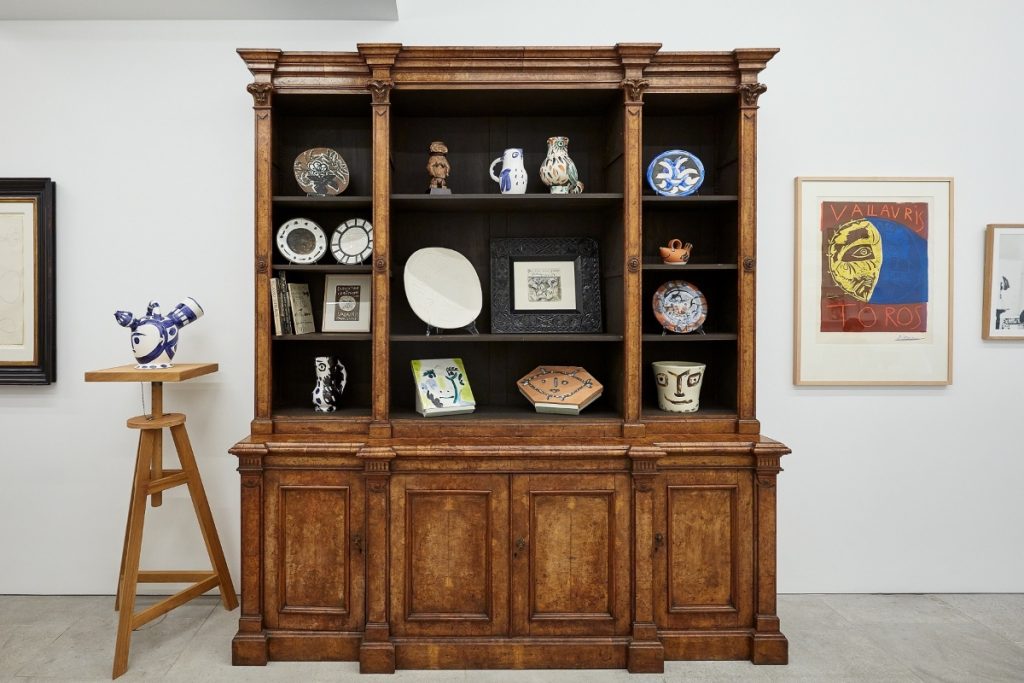
Installation view of Atelier Picasso 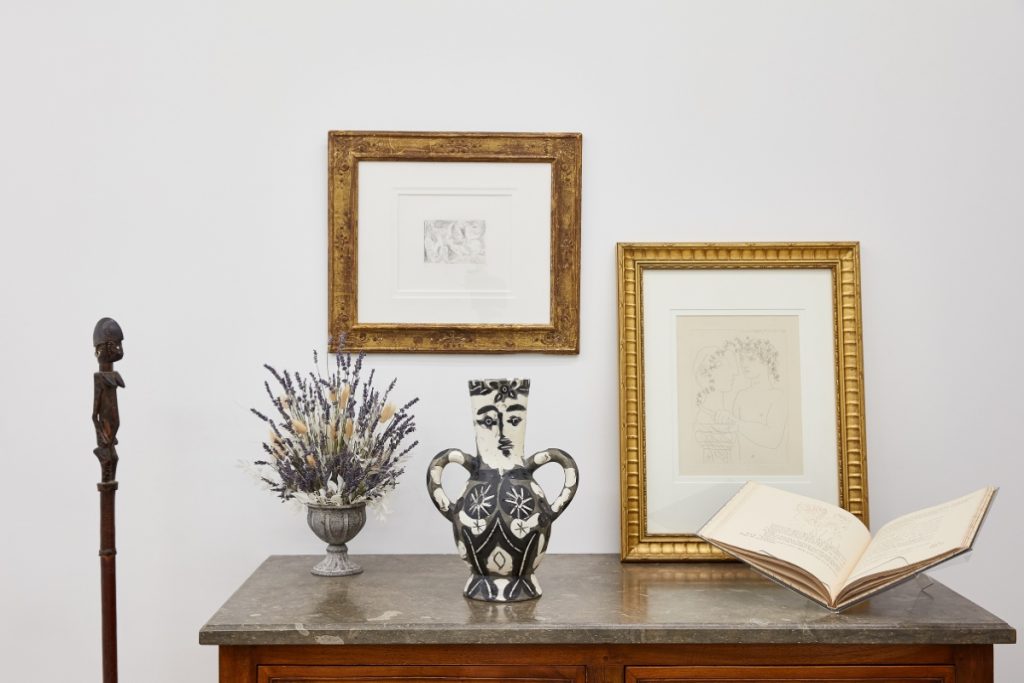
Installation view of Atelier Picasso 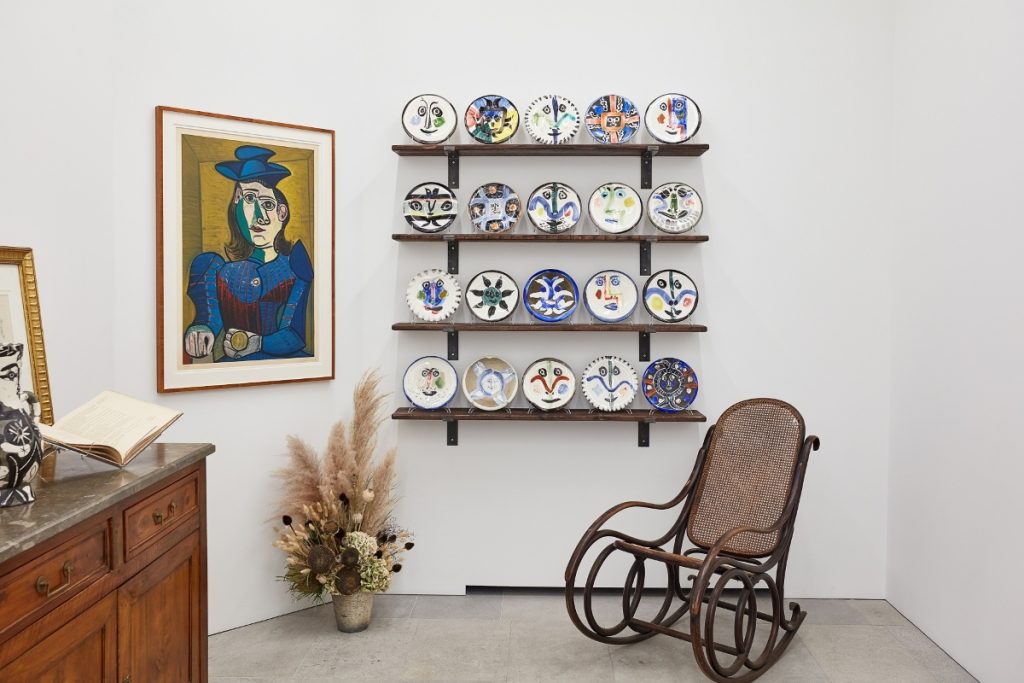
Installation view of Atelier Picasso 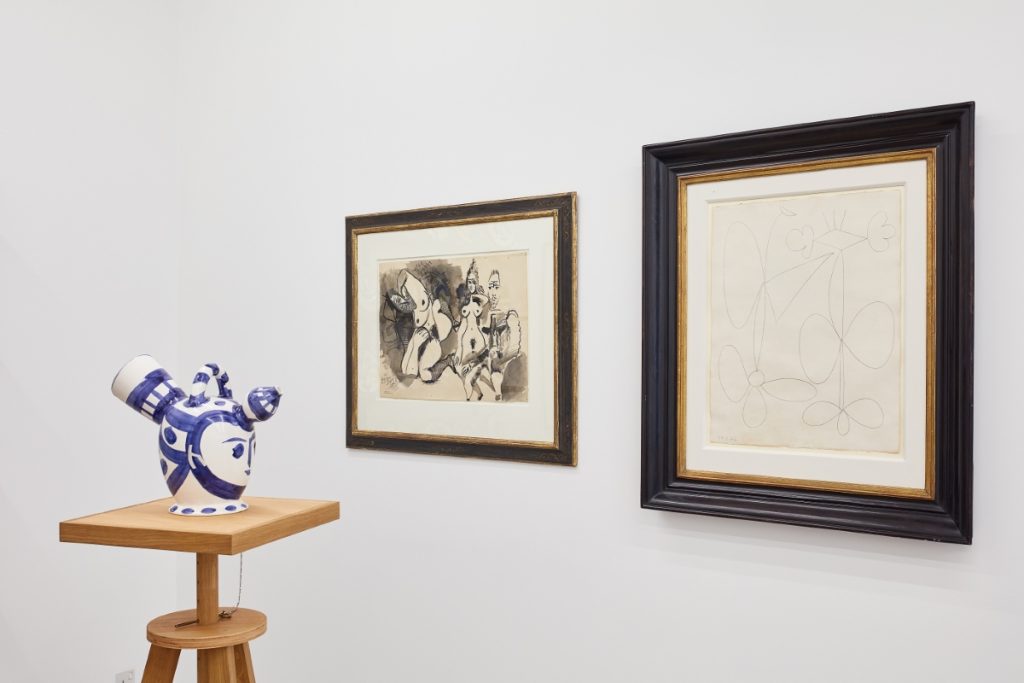
Installation view of Atelier Picasso 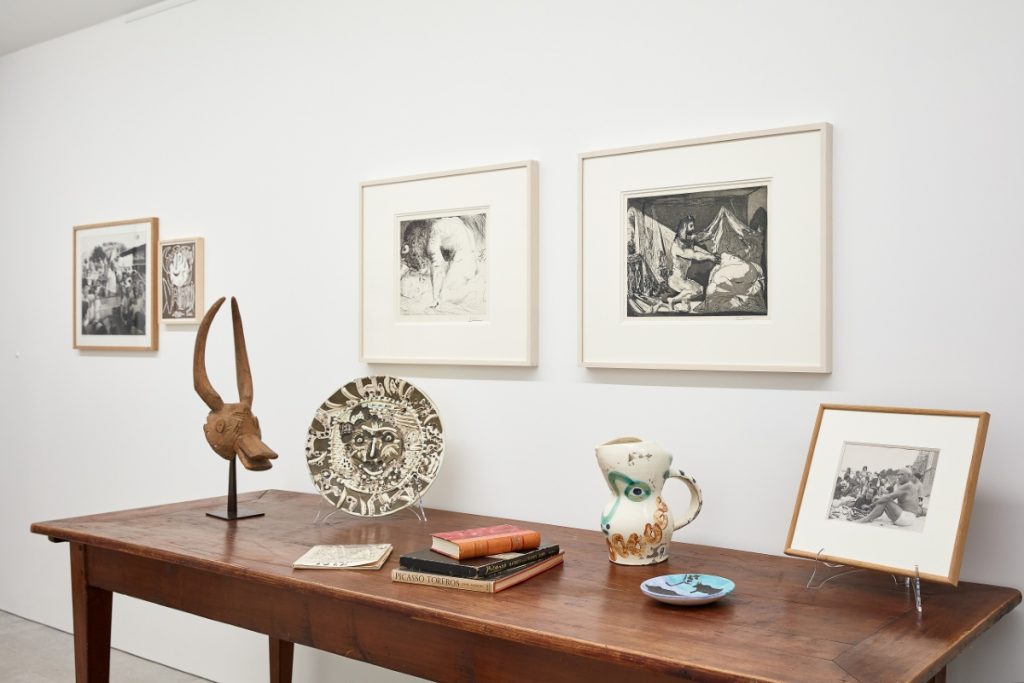
Installation view of Atelier Picasso 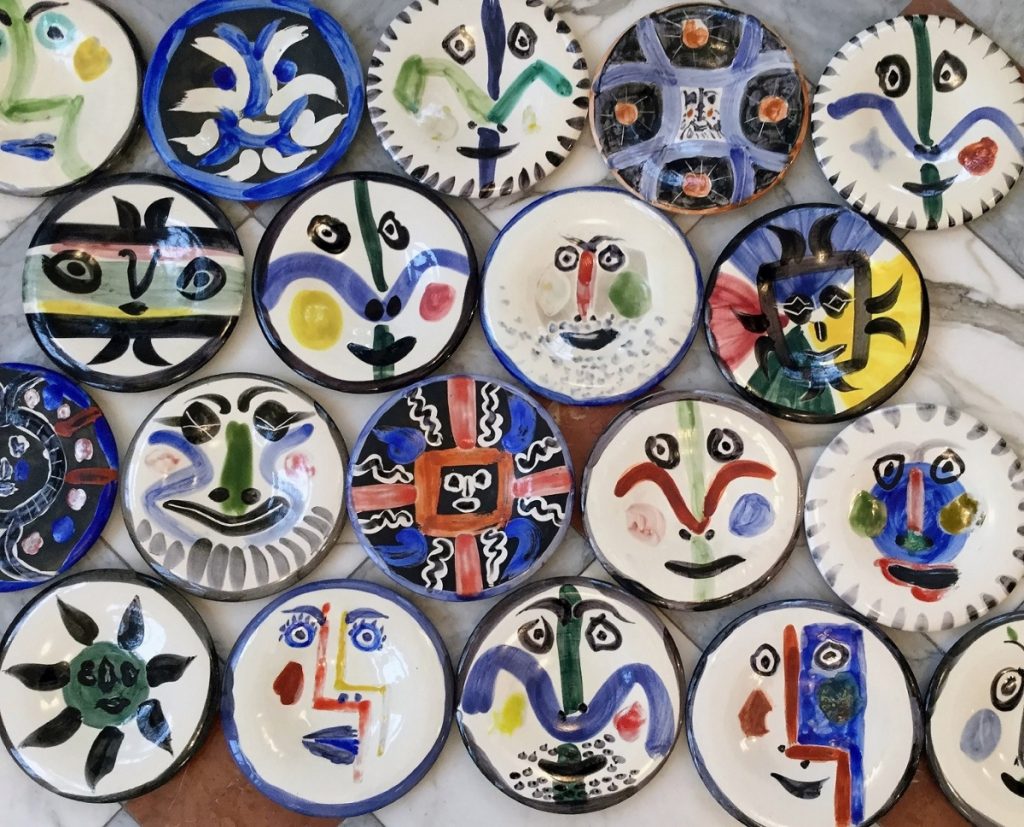
The Complete Set of 20 Visage plates, Pablo Picasso, 1963, ceramic, 25 cm diameter 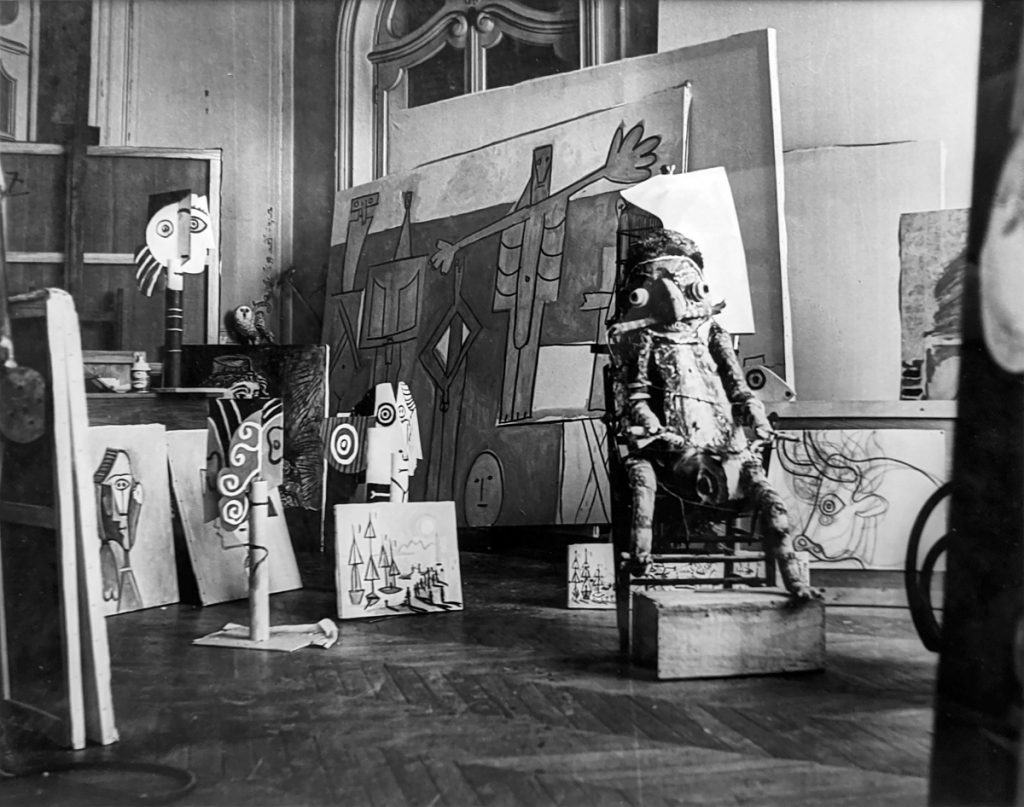
La Salon de la Villa, La Californie à Cannes, André Villers, photography, 24 x 30 cm 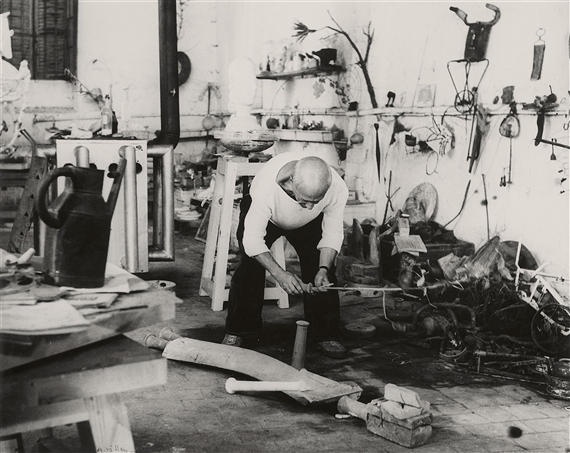
Andre Villers, Picasso dans son atelier de sculpture a Vallauris, 1953
Atelier Picasso is on view at BASTIAN, London
September 3-31, 2020
Atelier Picasso at BASTIAN recreates Picasso’s Cannes studio as an immersive experience within the gallery, using his treasure trove of objects including furniture, sculptures, ceramics, drawings and prints. Throughout his life Picasso was a prolific image maker, experimenting and excelling in every medium with which he worked. This extraordinary installation-style exhibition brings to life a variety of Picasso’s oeuvre.
Picasso moved to the South of France, after the Second World War, in 1946; despite an already remarkable career he was determined to keep experimenting and longed to escape war-torn Paris. A hoarder, Picasso piled the surfaces and floors of his studio with source material and original works as seen in this BASTIAN exhibition. Included in Atelier Picasso are a number of photographs from André Villers, a close friend of Picasso since their first encounter in March 1953. At the time when Picasso immersed himself into working in clay and was producing an overwhelming body of ceramic works, Villers produced many portraits of the artist offering an unparalleled glimpse into his studio.
Le salon de la villa shows Picasso’s studio within his famed Villa La Californie where the frenetic atmosphere is apparent. Picasso took ordinary vases and plates and transformed thousands of them, twisting some into birds and zoomorphic shapes and painting others – these can be seen across his workspaces and in the exhibition. Included in BASTIAN’s exhibition are The Complete Set of 20 Visage plates from 1963. Whilst the motif of a smiling face is recurrent in Picasso’s oeuvre, this is the only occasion whereby he focuses solely on playing with the reduced form on round plates. This series of works was not conceived as a set and the plates are from editions of different sizes, so it is unlikely such a complete set exists anywhere else in the world.
Picasso’s well-documented love of birds is evident in a number of his ceramic works. Wood Owl (1969), a truly captivating ceramic owl, is substantiated by a fierce gaze sent from its piercing black eyes. With a bright colour palette, this stunning work allows Picasso’s artistic handling to shine through. Picasso’s three-dimensional ceramics mainly refer to the animalistic genre. His favourite owls with human faces prevail among the characters – an owlet and a goat were the artist’s pets. Picasso’s expertise gave ceramics a new existence taking simple objects of everyday life, transforming them through nature into the resulting object d’arts.
While animals are a huge part of his ‘ceramic-sculptures’, Picasso’s ceramics are also frequently decorated with faces of women and men, some with more figurative scenes. Carreau Visage d’Homme, 1965, is a beautiful example of this with varying levels of reality and abstraction present in the male face plaques.
This glimpse into a recreation of his South of France studio shows that Picasso was not content to work with one medium alone, experimenting instead with a mixture of styles and expressions. Lithograph and linocut posters and books demonstrate the artist’s quirky line work and playful colouration which enticed viewers. The details are often simple – whimsical, blocked white font contrasts with a rich background colour. One lithographic poster from 1984, Gallieri Jorgen Expose Les Lithographies de L’atelier Mourlot, is composed of six colours; it is one of his most significant experiments in using colour in printmaking and there are very few other examples of such colourful Picasso lithographs.
Other works in the exhibition include the masterpiece Minotaure caressant une dormeuse from Picasso’s Vollard Suite; the mythical Minotaur was Picasso’s alter ego in the 1930s and part of a broader exploration of Classicism that persisted in his work for many years. For Picasso it expressed complex emotions at a time of personal turmoil, symbolising lasciviousness, violence, guilt, and despair.
Picasso’s works crown the collections of every major art gallery and his importance to generations of artists and cultural theorists is unprecedented. This studio recreation in Mayfair will offer a rarely seen exploration into the ingenious mind of one of the greatest talents of the 20th century.
Established by Céline and Heiner Bastian in 1989, the gallery is directed by Aeneas Bastian since 2016. 20th Century artists, such as Pablo Picasso, Jean Dubuffet, as well as German and American post-war artists including Joseph Beuys, Anselm Kiefer, Cy Twombly, Robert Rauschenberg and Andy Warhol, form the core of the exhibition program.
Contact
020 3940 5009
BASTIAN
8 Davies Street
London W1K 3DW
Photos by Luke Andrew Walker. Courtesy of BASTIAN.


